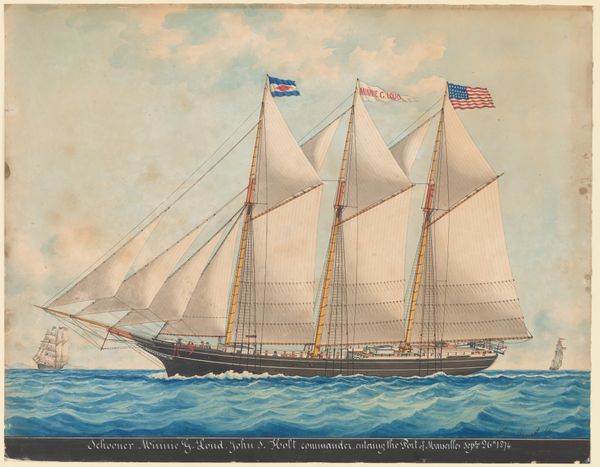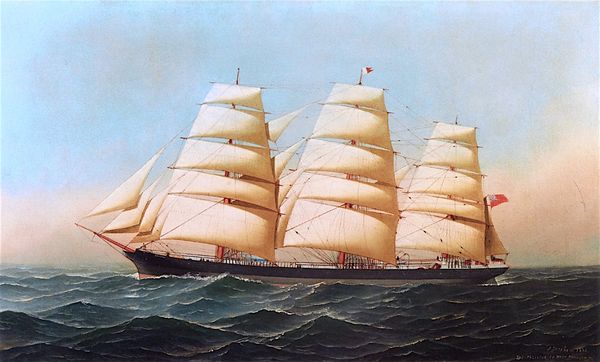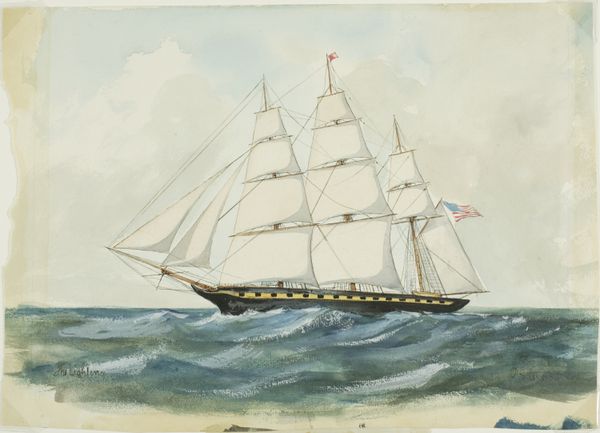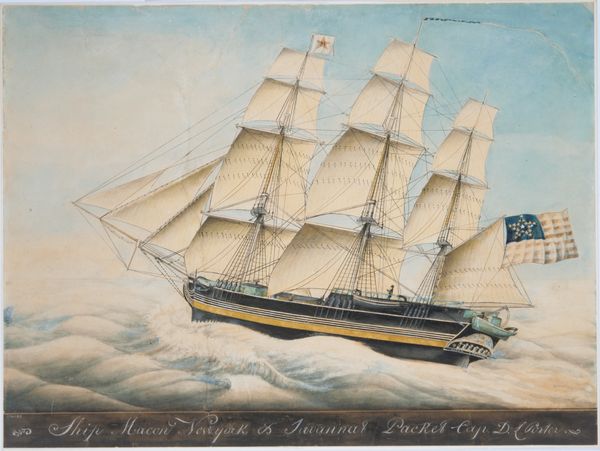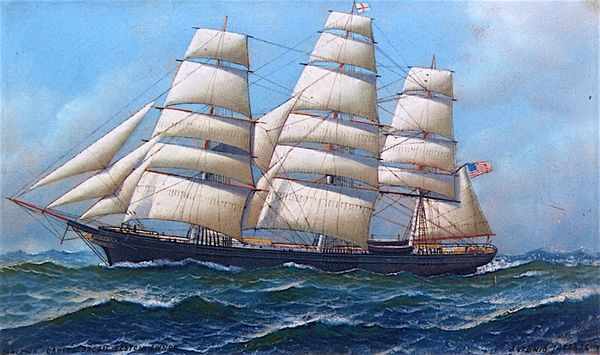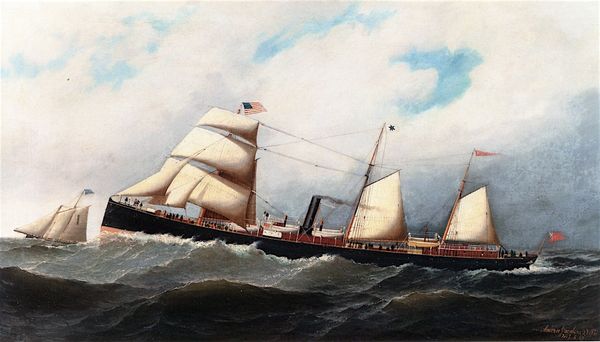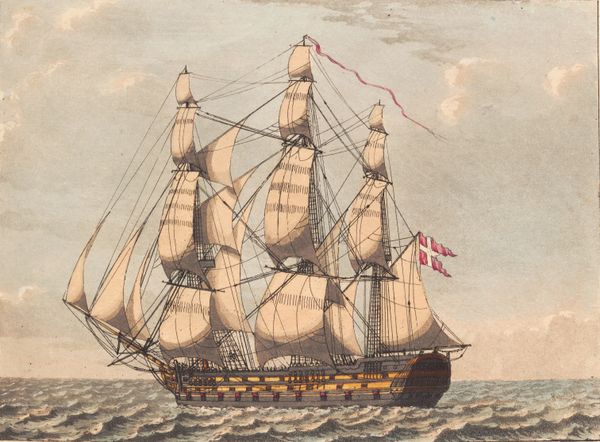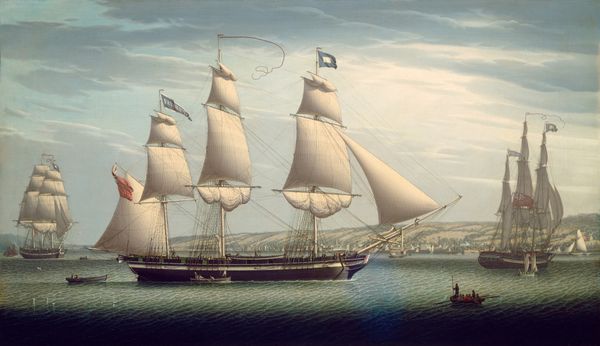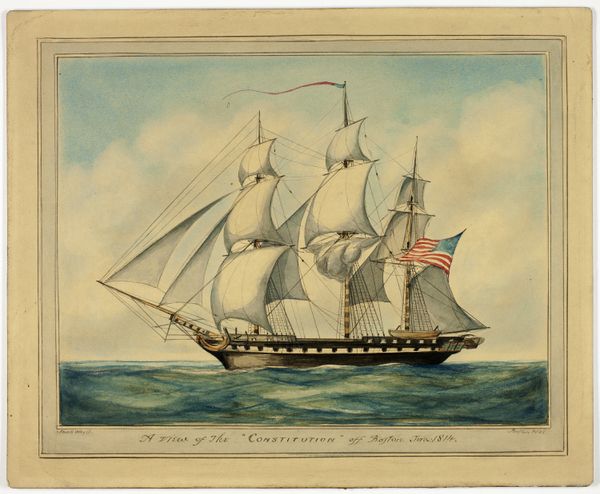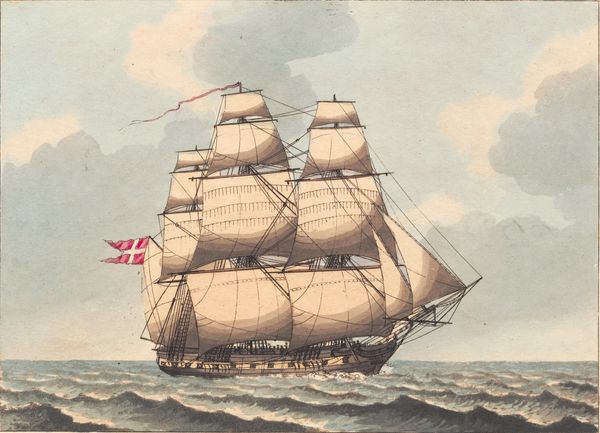
painting, watercolor
#
water colours
#
painting
#
landscape
#
oil painting
#
watercolor
#
watercolour illustration
#
genre-painting
Dimensions: 26 x 35 1/4 in. (66.0 x 89.5 cm)
Copyright: Public Domain
Curator: Immediately, I'm struck by the ship's imposing presence amidst this almost quaint watercolour. Editor: Indeed. We're looking at "The Ship Fleetwing," believed to have been created around the 19th century. It resides here at the Minneapolis Institute of Art. Curator: Watercolours were commonly used for these ship portraits, but I always wonder about the physical demands faced by maritime artists of the time. Did they paint *en plein air*, enduring harsh conditions to accurately depict these vessels, or rely solely on memory or preliminary sketches made ashore? That labour informs everything. Editor: That’s a pertinent question. These images served vital social and economic functions; they represented powerful merchant fleets. Notice the flags displayed – the American flag suggests American ownership of the ship or goods – reflecting complex international relations of the period and trade routes to and from places like Hong Kong, as the inscription suggests. Curator: Exactly! This is where the artist's specific choices become visible. The detailed rendering of the ship itself speaks to its function. Each rope, each sail, has a purpose in harnessing the elements, turning wind into mercantile power. We shouldn't forget that trade supported expansionism and even colonization, directly impacting many lives across the globe. Editor: Absolutely. Maritime imagery like this one played a crucial role in shaping national identity and promoting the idea of progress and global reach during the era of expansionism. Ships equaled global political power and influence. Curator: There’s an odd disjunction between the rather picturesque watercolour style and the immense material realities of the ship itself, from the wood and sails, the human labour involved in sailing it. Editor: Perhaps that contrast tells us something about the way people wanted to view global trade back then – sanitized, heroic, picturesque rather than something tied to very complex, sometimes uncomfortable political realities. It makes you wonder about its display then versus its meaning and display within the context of our museum today. Curator: A disconnect still relevant now, in an age of globalization and consumption where we often fail to grasp the true origins of the materials surrounding us daily. Editor: Precisely. Reflecting on it now, “The Ship Fleetwing" is not just an image of a vessel, it's a floating intersection of histories. Curator: Yes, reminding us that seemingly straightforward aesthetics conceal complex processes.
Comments
No comments
Be the first to comment and join the conversation on the ultimate creative platform.
